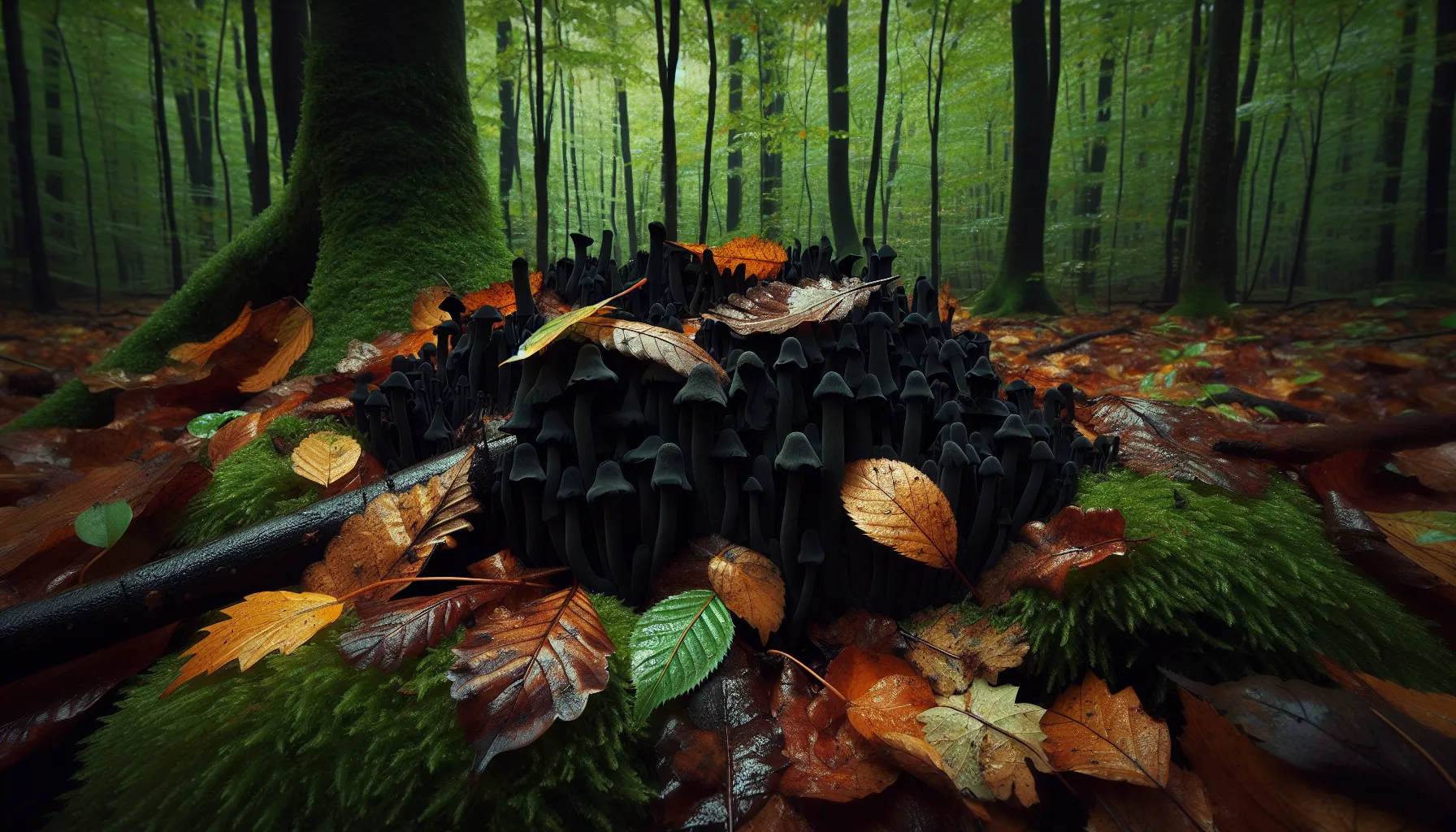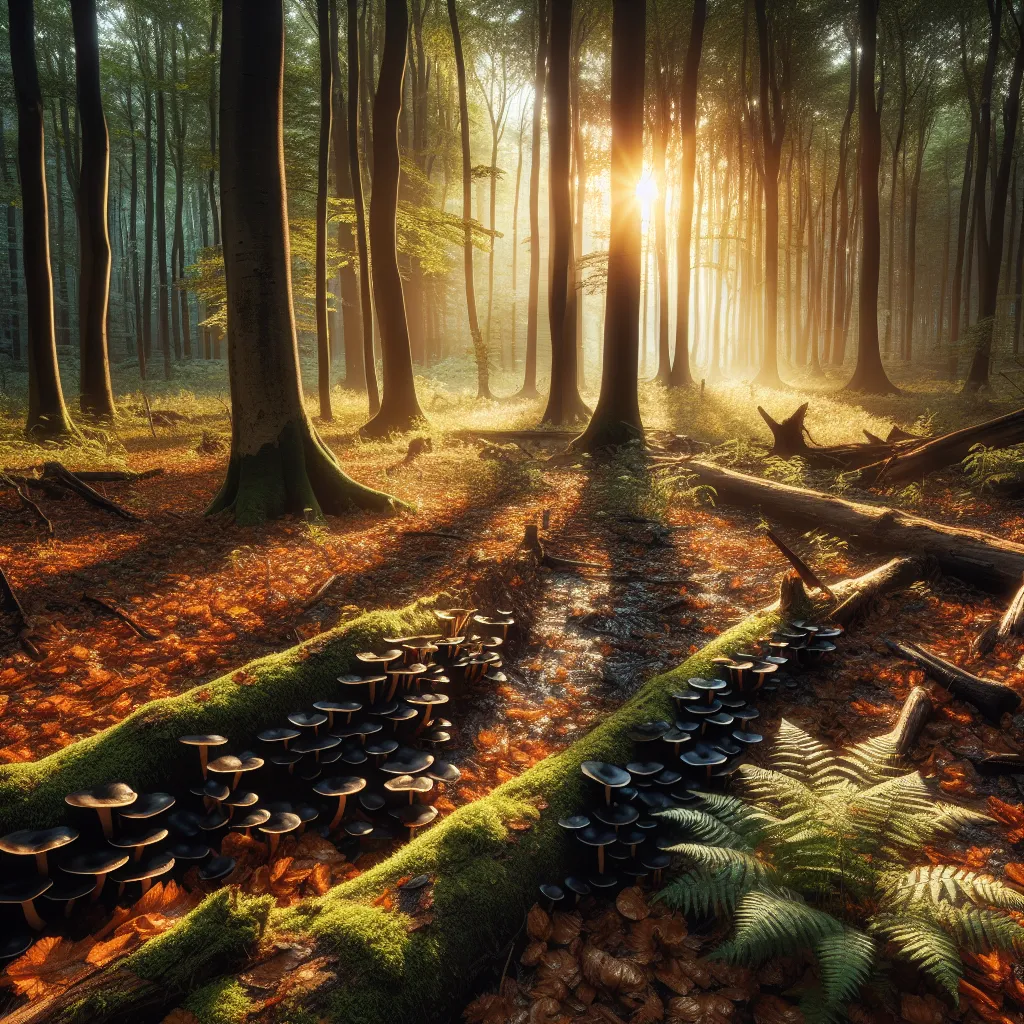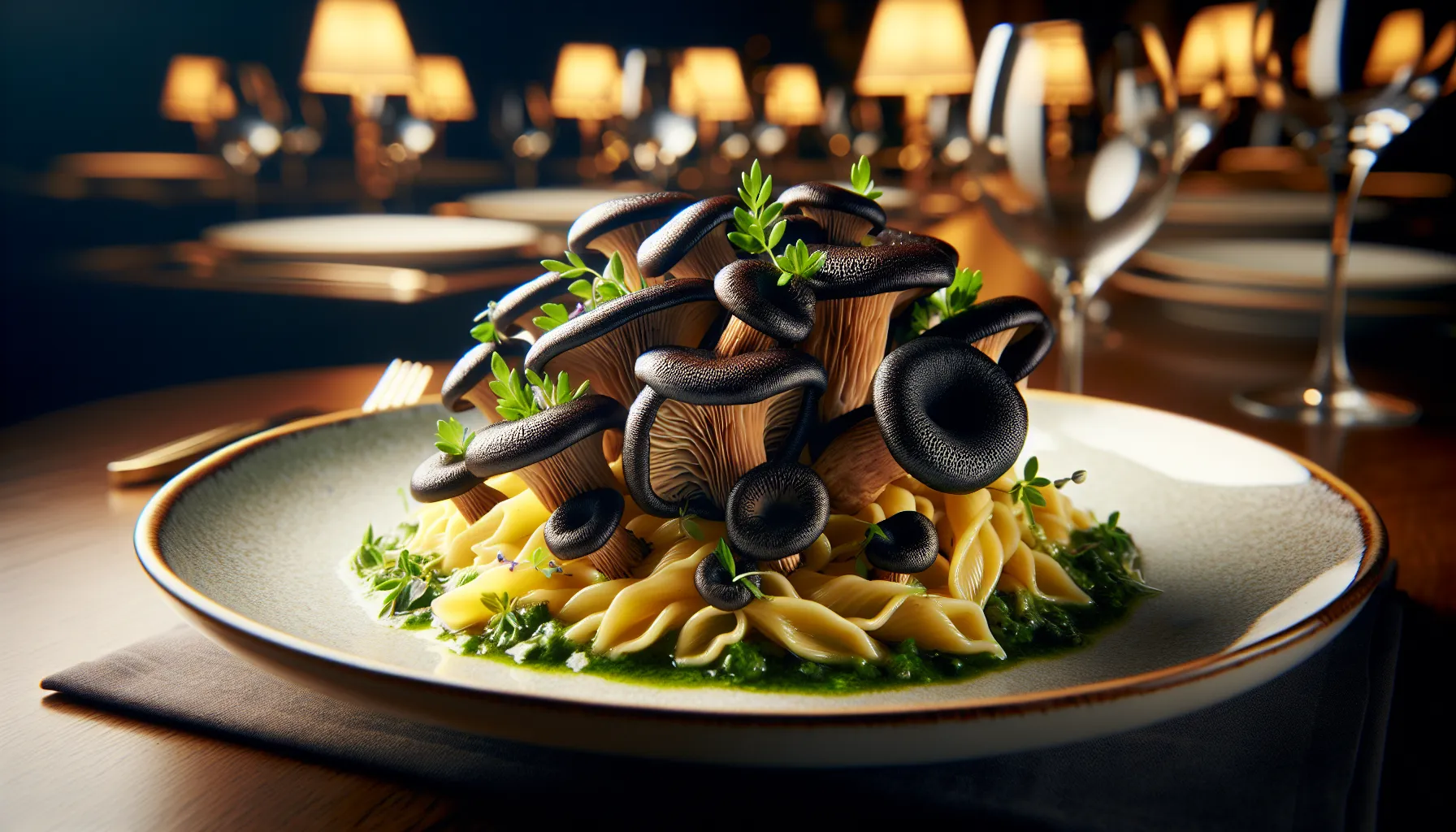The forest floor, a mosaic of nature’s intricate designs, harbors a culinary gem that is as understated in its appearance as it is explosive in flavor—the black trumpet mushroom. Known scientifically as Craterellus cornucopioides, this wild mushroom is a forager’s treasure and a chef’s delight. With an appearance that can best be described as a dark mystery, they often go unnoticed, blending seamlessly with the leaf-litter of the forest bed. However, for those who know where to look, the black trumpet mushroom offers a taste that is unparalleled in the fungal kingdom.

A Glimpse into the Black Trumpet’s World
The black trumpet mushroom, donning shades of black, gray, or sometimes brown, is easily recognizable by its trumpet-like shape with outward rolling wavy edges. Unlike many of its fungal cousins, it lacks gills, teeth, or pores for spore dispersal, presenting a smooth or slightly wrinkled underside instead. Known by other evocative names such as the “Horn of Plenty,” “Trumpet of Death,” and “Black Chanterelle,” the black trumpet is closely related to the prized chanterelle group of mushrooms.
These saprotrophic organisms play a crucial role in the ecosystem, decomposing organic matter and possibly engaging in mycorrhizal associations with tree roots. Their full ecological significance, while not completely understood, is an area of ongoing study by mycologists and ecologists alike.
The Elusive Hunt
Native to both Europe and North America, black trumpet mushrooms are often found in clusters, particularly abundant on the West Coast of the United States and also appearing on the East Coast during the late summer and fall seasons.
To find black trumpets, one must be well-versed in their preferred habitats:
- Hardwood forests are their abode, with beech and oak trees being common associates.
- Mossy patches provide a stark backdrop, allowing their dark forms to become more conspicuous.
- Small streams create the moist conditions necessary for their growth.
Foragers must practice patience, moving slowly and examining the forest floor with a discerning eye to spot these elusive fungi.

The Culinary Appeal
The gastronomic allure of the black trumpet mushroom lies in its unique smoky flavor, subtle yet distinct. This characteristic makes it a favorite among chefs for its versatility and its ability to complement a wide array of ingredients without overpowering them. Ideal for light culinary preparations, black trumpets can enhance pizzas, pastas, soups, and sauces.
They marry well with an array of foods including salmon, eggs, poultry, and cheese, and are enhanced by the addition of caramelized onions, garlic, chives, and thyme. A pro tip for culinary enthusiasts: incorporating black trumpet mushrooms in recipes calling for white wine can elevate the dish to new heights.
Harvesting and Preparation
When setting out to forage black trumpet mushrooms, equip yourself with a sharp knife or scissors to snip the mushrooms at their base, leaving the dirty parts behind. Cleaning them is straightforward—open up the trumpet and gently brush out any interior debris using a mushroom brush or a soft pastry brush.
In the event of rain or excessive dirt, split the mushrooms lengthwise for a thorough clean. A brief dip in cold water followed by a quick dry will ensure they don’t absorb excess moisture. For short-term storage, place the cleaned mushrooms in a refrigerator, where they can be kept fresh for several days.
For long-term storage, drying is the method of choice. Once dehydrated, store them in airtight containers placed in a cool, dark place to preserve their flavor. When ready to use, they can be reconstituted, bringing back their full, rich taste.
The Deceptive Beauty
Despite their somber appearance, black trumpet mushrooms are a culinary delight, standing shoulder to shoulder with other esteemed edible mushrooms. A simple sauté with oil, salt, and pepper can reveal a world of flavor awaiting discovery.
For those interested in further exploring the world of mushrooms, whether it be foraging techniques or storage tips, there are a plethora of resources available. Websites like MycoKey offer identification tools for various mushroom species, and forums like The Shroomery provide a community for mushroom enthusiasts to share experiences and advice.
In addition, organizations such as North American Mycological Association offer events and forays for individuals looking to expand their mycological knowledge in a community setting.
As with any wild foraging, it’s essential to be absolutely certain of the identification of any mushroom before consuming it. Resources like Mushroom Expert can provide detailed information, aiding in the safe and responsible enjoyment of foraging.

Conclusion
The black trumpet mushroom, with its shrouded presence and exquisite taste, is a testament to the wonders that lie hidden in nature’s depths. For the forager and the food lover alike, the black trumpet is a reminder that sometimes the most unassuming exteriors hide the richest of experiences. This guide is but a starting point into the world of black trumpets—a world that promises adventure, discovery, and a taste that is truly unforgettable.
